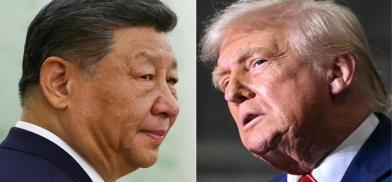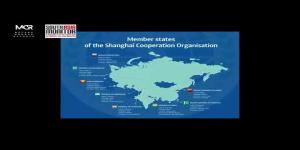South Asian Nations Recalibrating Role, Balancing Trade Ties with US and China
China’s presence in South Asia has expanded considerably since the launch of the BRI in 2013. Beyond trade and infrastructure, it has emerged as a provider of military hardware and a key influencer in education, media, and policy discourse. China's outreach in smaller South Asian countries is multifaceted, ranging from party-to-party diplomacy to soft power tools like Buddhist cultural ties and influence operations.

China’s rapid rise in South Asia since the 2000s, marked by deepening and expanding engagements with all countries in the region, has altered the geopolitical balance. This shift has been further complicated by the widening divergence in India-China relations. India’s centrality in South Asia is a factor that the Chinese recognise and often leverage to shape their engagements with other regional governments. India is frequently seen as a common adversary, allowing China to strengthen ties with Pakistan through conventional hard security and economic channels.
Among other countries in the region, the Maldives implemented its Free Trade Agreement (FTA) with China on January 1, 2025, while Beijing continues negotiations with Bangladesh and Sri Lanka for similar deals. Though the India-Sri Lanka Free Trade Agreement (ISFTA) came into force in 2000, followed by the South Asian Free Trade Agreement (SAFTA) in 2006, these regional pacts have yielded limited results. Issues such as protectionism, overlapping production bases, high tariffs and non-tariff barriers, inadequate infrastructure, political distrust, and high logistics costs have restricted their effectiveness. As a result, South Asia remains one of the least integrated regions globally, with intra-regional trade accounting for less than 5% of its total trade.
China's Growing Presence
In contrast, China has emerged as a significant trading partner in South Asia, challenging India’s traditional economic dominance. After signing an FTA with Pakistan in 2006, China has steadily increased its investments and trade linkages with India’s smaller neighbours, becoming one of their top trade partners. China's distinct manufacturing strengths, cost competitiveness, and integrated supply chains have facilitated its economic outreach, aligning with its broader geopolitical and geo-economic ambitions. With the launch of the Belt and Road Initiative (BRI), Beijing proposed FTAs with the Maldives, Sri Lanka, and Bangladesh to promote cheaper exports, advance BRI projects, and gain economic leverage.
South Asian countries, facing structural economic challenges, are keen to expand trade engagements. FTAs are viewed as a means to access affordable imports, boost exports, stimulate local manufacturing, and ease pressure on foreign exchange reserves. The Maldives, with limited production capacity and rising import costs, faces acute reserve constraints. Bangladesh, set to graduate from its least-developed country (LDC) status in 2026, risks losing preferential market access. Sri Lanka, recovering from a severe economic crisis, is also looking to diversify trade relationships. Both Bangladesh and Sri Lanka are negotiating FTAs with China and have expressed interest in joining the China-led Regional Comprehensive Economic Partnership (RCEP).
Importantly, these countries also seek deeper integration with India, aiming to benefit from its economic growth. India, for its part, is promoting regional connectivity through infrastructure projects funded by concessional loans and grants. However, a recurring concern is the fear that Chinese imports could flood South Asian markets, undermining local industries and displacing regional exports. Over the past two decades, both India and China have been the top exporters to the Maldives, Sri Lanka, and Bangladesh, with trade volumes steadily rising.
Chinese exports to Southeast Asia have also surged in recent years, satisfying growing consumer demand, feeding offshore manufacturing investments, and compensating for losses from U.S. tariffs. For instance, shipments to Vietnam rose by 18.8% from January to May 2025 compared to the same period in 2024. Chinese exporters have been shifting investments to Southeast Asia since the U.S.-China trade war was triggered during President Donald Trump’s first term in 2018. ASEAN countries benefit from zero-tariff FTAs with China and are home to fast-growing, increasingly affluent consumer markets.
Implications of Trade War
The re-escalation of the U.S.-China trade war raises concerns about a prolonged economic conflict that could drastically reshape the global economy. Under Trump’s second presidency, questions arise about whether this trade war could inadvertently empower South Asian nations, allowing them to recalibrate their roles in global supply chains and regional politics.
India and Bangladesh have responded pragmatically by adjusting tariffs to make U.S. imports more affordable amid rising Chinese prices. India is already among the top 10 trading partners of the U.S., supported by a diversified industrial base, an expanding domestic market, and a large pool of skilled labour. This has positioned India as a viable alternative to China in global supply chains. Under the "China+1" strategy, many multinational corporations have started viewing India as a stable and scalable manufacturing base. Vietnam has been a major beneficiary, but India gained momentum with the launch of the Production Linked Incentive (PLI) scheme in 2020. Bangladesh has also expanded its export footprint, particularly in the garments sector, which now accounts for 80% of its exports. Since 2014, Bangladesh has been gradually overtaking Pakistan as South Asia’s second-largest exporter.
In contrast, Pakistan and Sri Lanka have struggled to capitalise on shifting supply chains due to political instability, inadequate infrastructure, and inflation-driven economic hardships. These challenges have limited their ability to attract business relocation from China.
South Asian countries acknowledge that both the U.S. and China offer unique advantages. While China is vital for regional infrastructure and trade, its lending practices are often seen as opaque and unsustainable. The U.S., on the other hand, provides essential economic support, particularly in areas like technology, health, and governance. Rather than aligning exclusively with one power or being passive players in a great power rivalry, countries in the region are actively seeking to balance engagements with both sides. They aim to benefit from U.S. tariffs and supply chain realignments while continuing to engage China through initiatives like the SCO and BRICS.
Strategic neutrality and economic pragmatism have become key pillars of foreign and trade policy for most South Asian nations. The region appears reluctant to be drawn into a Cold War-like alliance system. This neutrality aligns with the strategic interests of both the U.S. and China, who see South Asian stability as crucial for their Indo-Pacific ambitions, particularly in ensuring secure sea lines of communication and uninterrupted trade.
Advantage China?
A potential global advantage for China could emerge from a U.S. pullback on climate leadership under Trump. This scenario raises important questions about China’s role on the global stage—whether it should focus solely on domestic emissions or also lead international climate efforts. In the electric vehicle (EV) sector, China has made strategic partnerships with European engineering firms and American battery companies. This has helped create a globally competitive EV industry through innovation, joint ventures, and acquisitions—opening doors for entry into regional markets, including South Asia.
China’s presence in South Asia has expanded considerably since the launch of the BRI in 2013. Beyond trade and infrastructure, it has emerged as a provider of military hardware and a key influencer in education, media, and policy discourse. China's outreach in smaller South Asian countries is multifaceted, ranging from party-to-party diplomacy to soft power tools like Buddhist cultural ties and influence operations.
While the India-Pakistan conflict in May 2025 dealt a blow to China-India relations, it is unlikely to derail the gradual thaw between New Delhi and Beijing. The stakes for both countries are too high. High-level diplomatic engagements will likely continue, though the underlying rivalry is expected to persist, making any rapprochement a slow and uncertain process.
A key distinction must be drawn between international development cooperation and economic cooperation. While the former—led by international organisations, NGOs, and civil society—focuses on governance, health, and humanitarian goals, China’s model emphasises state-led economic growth driven by investments in energy, transport, and digital infrastructure. It is up to South Asian countries to determine which development model best aligns with their national priorities.
(The writer is a retired Special Secretary, Government of India. Views are personal. He can be reached at ppmitra56@gmail.com)
References
[i] Xavier Constantino, and JabinT. Jacob, Studying China’s Themes, Partners and Tools in South Asia May 3,2023,1-1https://csep.org/wp-content/uploads/2023/05/Introduction-Studying-Chinas-Themes-Partners-and-Tools-in-South-Asia.pd
[ii] Shivamurthy A India Shouldn't Ignore Growing Chinese Trade In NeighbourhoodJan 04, 2025ObserverbResearch Foundationhttps://www.orfonline.org/
[iii] Jennings RalphPressured by US tariffs, Chinese exports expand in Vietnam, Thailand, Indonesia, 10 Jun 2025,SouthChina Morning Post, https://www.scmp.com/economy/china-economy/article/3313786/us-china-trade-showdown-where-do-talks-stand-after-day-1?module=perpetual_scroll_1_RM
[iv] Kasana ManishaThe Geopolitical Impact of U.S-China Trade War in South Asia17 March, 2025,Diplomatist https://diplomatist.com/2025/03/17/the-geopolitical-impact-of-u-s-china-trade-war-in-south-asia/
[v] Yang Muyi, Chinese innovation can help lead the world to a greener future,East Asia Forum June 12 2025,eastasiaforum.org
[vi] , Xavier Constantino, and JabinT. Jacob, How China EngagesSouthAsia;in the Open and Behind the Scenes,Centre for Social and Economic Progress(CSEP) July 2025https://csep.org/reports/how-china-engages-south-asia-in-the-open-and-behind-the-scenes/
[vii] Lidarev IvanThe Future of China-India Thaw after the Indo-Pakistan Conflict,Institute of Southasian Studies,National university of Singapore,ISAs Briefs,25 june 2025
https://www.isas.nus.edu.sg/papers/the-future-of-china-india-thaw-after-the-indo-pakistan-conflict/
[viii] Russel Daniel and Blake Berger ,Development as Strategy: The United States, China, & the Global SouthAPRIL 2025 A Report from the Asia Society Policy Institute tps://asiasociety.org/sites/default/files/2025-04/Development%20As%20Strategy-The%20U.S.%2C%20China%2C%20and%20The%20Global%20South_ASPI_









Post a Comment